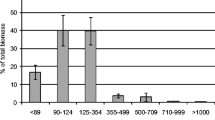Abstract
Two sequential batch reactors (R1 and R2) of aerobic granular sludge (AGS) were inoculated with activated sludge of different origins. The objective was to investigate the granulation and the consistency between the structure of the microbial communities (16S rRNA amplicon sequencing) in each reactor and their metabolic performance (removal of C, N, and P). Both reactors were fed with acetate-based synthetic wastewater, targeting an anaerobic–aerobic cycle reputed to favor the phosphorus- and glycogen-accumulating organisms (PAO and GAO). Stable granulation was achieved in both reactors, where, instead of PAO, the dominant genera were ordinary heterotrophic organisms (OHO) such as Thauera, Paracoccus, and Flavobacterium known for their high capacity of aerobic storage of polyhydroxyalkanoates (PHA). Generally, there was good consistency between the metabolic behavior of each reactor and the bacterial genera detected. Both reactors showed high removals of C and complete nitrification (Nitrosomonas and Nitrospira detected) but a low level of simultaneous nitrification–denitrification (SND) during the aerated phase. The latter causes that nitrates were recycled to the initial phase, in detriment of PAO selection. Meanwhile, the study showed that selecting slow-growing OHOs (with aerobic storage capacity) favors stable granulation, revealing an alternative AGS technology for C and N removal.






Similar content being viewed by others
Data availability
Raw sequencing data (16S rRNA amplicons) that support the findings of this study have been deposited in “GenBank” under the following accession codes: SRR18460418 and SRR18460419. All other data generated or analyzed during this study are included in this published article and its supplementary information file.
References
Adav SS, Lee DJ, Show KY, Tay JH (2008) Aerobic granular sludge: recent advances. Biotechnol Adv 26:411–423
Albuquerque MG, Carvalho G, Kragelund C, Silva AF, Barreto-Crespo MT, Reis MA, Nielsen PH (2013) Link between microbial composition and carbon substrate-uptake preferences in a PHA-storing community. ISME J 7(1):1–12
Alishum A. (2021). DADA2 formatted 16S rRNA gene sequences for both bacteria & archaea. Version 4.2.Zenodo. 10.5281/zenodo.4735821
APHA AWWA and WEF (2017). Standard methods for the examination of water and wastewater. Water Environment Federation (WEF). 23st Ed. NY, USA.
Basset N, Katsou E, Frison N, Malamis S, Dosta J, Fatone F (2016) Integrating the selection of PHA storing biomass and nitrogen removal via nitrite in the main wastewater treatment line. Bioresour Technol 200:820–829
Bassin JP, Tavares DC, Borges RC, Dezotti M (2019) Development of aerobic granular sludge under tropical climate conditions: the key role of inoculum adaptation under reduced sludge washout for stable granulation. J Environ Manage 230:168–182
Bucci P, Coppotelli B, Morelli I, Zaritzky N, Caravelli A (2020) Simultaneous heterotrophic nitrification and aerobic denitrification of wastewater in granular reactor: microbial composition by next generation sequencing analysis. J Water Process Eng 36(2020):101254
Burow LC, Kong Y, Nielsen JL, Blackall LL, Nielsen PH (2007) Abundance and ecophysiology of Defluviicoccus spp., glycogen-accumulating organisms in full-scale wastewater treatment processes. Microbiology 153:178–185
Chen H, Li A, Cui D, Cui Ch, Ma F (2019) Evolution of microbial community and key genera in the formation and stability of aerobic granular sludge under a high organic loading rate. Bioresour Technol Rep 7:100280
Coats ER, Brinkman CK, Lee S (2017) Characterizing and contrasting the microbial ecology of laboratory and full-scale EBPR systems cultured on synthetic and real wastewaters. Water Res 108:124–136
Colpa DI, Zhou W, Wempe JP, Tamis J, Stuart MCA, Krooneman J, Euverink GW (2020) Thauera Aminoaromatica MZ1T identified as a polyhydroxyalkanoate-producing bacterium within a mixed microbial consortium. Bioeng 7(1):19
de Kreuk MK, van Loosdrecht MC (2004) Selection of slow growing organisms as a means for improving aerobic granular sludge stability. Water Sci Technol 49(11–12):9–17
Fall C et al (2022) Ordinary heterotrophic organisms with aerobic storage capacity provide stable aerobic granular sludge for C and N removal. J Environ Manage 308:114662
Fall C, Barrón-Hernández LM, Olguín-Gutierrez MT, Bâ KM, Esparza-Soto M, Lucero-Chávez M (2020) Tertiary treatability of molasses secondary effluents for color and organics: performance and limits of ozonation and adsorption. Int J Environ Sci Technol 17(8):3651–3662
Guimarães LB, Wagner J, Akaboci TRV, Daudt GC, Nielsen PH, van Loosdrecht MCM, Weissbrodt DG, da Costa RHR (2020) Elucidating performance failures in use of granular sludge for nutrient removal from domestic wastewater in a warm coastal climate region. Environ Technol 41(15):1896–1911
Guo D, Zhang X, Shi Y, Cui B, Fan J, Ji B, Yuan J (2021) Microalgal-bacterial granular sludge process outperformed aerobic granular sludge process in municipal wastewater treatment with less carbon dioxide emissions. Environ Sci Pollut Res 28:13616–13623
Haaksman VA, Mirghorayshi M, van Loosdrecht MCM, Pronk M (2020) Impact of aerobic availability of readily biodegradable COD on morphological stability of aerobic granular sludge. Water Res 187:116402
He Q, Zhang W, Zhang S, Wang H (2017) Enhanced nitrogen removal in an aerobic granular sequencing batch reactor performing simultaneous nitrification, endogenous denitrification and phosphorus removal with low superficial gas velocity. Chem Eng J 326:1223–1231
Henriet O, Meunier C, Henry P, Mahillon J (2016) Improving phosphorus removal in aerobic granular sludge processes through selective microbial management. Bioresour Technol 211:298–306
Henze M, Gujer W, Mino T, van Loosdrecht MCM (2000) Activated sludge models, ASM1, ASM2, ASM2d and ASM3. IWA Publishing, London, UK
Iorhemen OT, Zaghloul MS, Hamza RA, Tay JH (2020) Long-term aerobic granular sludge stability through anaerobic slow feeding, fixed feast-famine period ratio, and fixed SRT. J Environ Chem Eng 8(2):103681
Krzanowski WJ (2006) Sensitivity in metric scaling and analysis of distance. Biometrics 62(1):239–244
Layer M, Adler A, Reynaert E, Hernandez A, Pagni M, Morgenroth E, Holliger C, Derlon N (2019) Organic substrate diffusibility governs microbial community composition, nutrient removal performance and kinetics of granulation of aerobic granular sludge. Water Res X 4:100033
Liang Z, Tu Q, Su X, Yang X, Chen J, Chen Y, Li H, Liu C, He Q (2019) Formation, extracellular polymeric substances, and structural stability of aerobic granules enhanced by granular activated carbon. Environ Sci Pollut Res 26:6123–6132
Liu C, Liu D, Qi Y, Zhang Y, Liu X, Zhao M (2016) The effect of anaerobic–aerobic and feast–famine cultivation pattern on bacterial diversity during poly-β-hydroxybutyrate production from domestic sewage sludge. Environ Sci Pollut Res 23:12966–12975
Liu W, Wu Y, Zhang S, Gao Y, Jiang Y, Horn H, Li J (2020) Successful granulation and microbial differentiation of activated sludge in anaerobic/anoxic/aerobic (A2O) reactor with two-zone sedimentation tank treating municipal sewage. Water Res 178:115825
López-Vazquez CM, Menéndez-Gutiérrez C, Fall C (2019). Edts. “Métodos experimentales para el tratamiento de aguas residuales”. IWA Publishing, London, UK 356
Nielsen PH, Daims H, Lemmer H (2009) FISH handbook for biological wastewater treatment. IWA Publishing, London, UK. https://doi.org/10.2166/9781780401775
Nielsen PH, McIlroy SJ, Albertsen M, Nierychlo M (2019) Re-evaluating the microbiology of the enhanced biological phosphorus removal process. Curr Opin Biotechnol 57:111–118
Nierychlo M, Andersen KS, Xu Y, Green N, Jiang C, Albertsen M, Dueholm MS, Nielsen PH (2020) MiDAS 3: an ecosystem-specific reference database, taxonomy and knowledge platform for activated sludge and anaerobic digesters reveals species-level microbiome composition of activated sludge. Water Res 182:115955
Othman I, Ab-Halim MH, Anuar AN, Rosman NH, Harun H, Noor SM, Ujang Z, van Loosdrecht MCM (2020) Identification and role of microbial species developed in aerobic granular sludge bioreactor for livestock wastewater treatment. Conf Ser Earth Environ Sci 479:012026
Pishgar R, Dominic JA, Sheng Z, Tay JH (2019) Influence of operation mode and wastewater strength on aerobic granulation at pilot scale: startup period, granular sludge characteristics, and effluent quality. Water Res 160:81–96
Pronk M, Giesen A, Thompson A, Robertson S, van Loosdrecht M (2017) Aerobic granular biomass technology: advancements in design, applications and further developments. Water Pract Technol 12(4):987–996
Pronk M, van Dijk EJH and van Loosdrecht MCM. (2020) Aerobic granular sludge. Chap. 11 in Biological wastewater treatment; principles, modelling and design. 2nd ed. Chen G. et al. Edts, IWA Publishing, London, UK. 866
Rollemberg SLD, Barros ARM, Firmino PIM, dos Santos AB (2018) Aerobic granular sludge: cultivation parameters and removal mechanisms. Bioresour Technol 270:678–688
Rollemberg SLS, Ferreira TJT, Firmino PIM, dos Santos AB (2020) Impact of cycle type on aerobic granular sludge formation, stability, removal mechanisms and system performance. J Environ Manage 256:109970
Scholten E, Lukow T, Auling G, Kroppenstedt RM, Rainey FA, Diekmann H (1999) Thauera mechernichensis sp. nov., an aerobic denitrifier from a leachate treatment plant. Int J Syst Evol Microbiol 49:1045–1051
Shannon CE (1948) A mathematical theory of communication. The Bell System Technical Journal 27:379–423
Siripong S, Rittmann BE (2007) Diversity study of nitrifying bacteria in full-scale municipal wastewater treatment plants. Water Res 41(5):1110–1120
Sruamsiri D, Thayanukul P, Suwannasilp BB (2020) In situ identification of polyhydroxyalkanoate (PHA)-accumulating microorganisms in mixed microbial cultures under feast/famine conditions. Sci Rep 10:3752
Stokholm-Bjerregaard M, McIlroy SJ, Nierychlo M, Karst SM, Albertsen M, Nielsen PH (2017) Critical assessment of the microorganisms proposed to be important to enhanced biological phosphorus removal in full-scale wastewater treatment systems. Front Microbiol 8:718
Świątczak P, Cydzik-Kwiatkowska A (2018) Performance and microbial characteristics of biomass in a full-scale aerobic granular sludge wastewater treatment plant. Environ Sci Poll Res 25:1655–1669
Szabó E, Liébana R, Hermansson M, Modin O, Persson F, Wilén BM (2017) Microbial population dynamics and ecosystem functions of anoxic/aerobic granular sludge in sequencing batch reactors operated at different organic loading rates. Front Microbiol 8:770
van Loosdrecht MCM, Nielsen PH, Lopez-Vazquez CM, Brdjanovic D (2016) Experimental methods in wastewater treatment. IWA publishing, London, UK., p 362
van Loosdrecht MCM, Pot MA, Heijnen JJ (1997) Importance of bacterial storage polymers in bioprocesses. Water Sci Technol 35(1):41–47
Vjayan T, Vadivelu VM (2017) Effect of famine-phase reduced aeration on polyhydroxyalkanoate accumulation in aerobic granules. Bioresour. Technol. 245(A):970–976
Wang H, Song Q, Wang J, Zhang H, He Q, Zhang W, Song J, Zhou J, Li H (2018) Simultaneous nitrification, denitrification and phosphorus removal in an aerobic granular sludge sequencing batch reactor with high dissolved oxygen: Effects of carbon to nitrogen ratios. Sci Total Environ 642:1145–1152
Wang Q, Garrity G, Tiedje J, Cole J (2007) Naïve Bayesian classifier for rapid assignment of rRNA sequences into the new bacterial taxonomy. Appl Environ Microbiol 73(16):5261–5267
Wei D, Shi L, Yan T, Zhang G, Wang Y, Du B (2014) Aerobic granules formation and simultaneous nitrogen and phosphorus removal treating high strength ammonia wastewater in sequencing batch reactor. Bioresour Technol 171:211–216
Wentzel MC, Dold PL, Ekama GA, Marais GvR (1989) Enhanced polyphosphate organism cultures in activated sludge systems. Part III Kinetic model Water SA 15(2):89–102
Winkler MKH, Meunier C, Henriet O, Mahillon J, Suárez-Ojeda ME, Moro GD, Sanctis MD, Iaconi CD, Weissbrodt DG (2017) An integrative review of granular sludge for the biological removal of nutrients and recalcitrant organic matter from wastewater. Chem Eng J 336:489–502
Xiang J, Wang C, Lv W, Liu Y, Sun J, Gong T (2021) Differences of bacterial communities in two full-scale A2/O municipal wastewater treatment plants and their effects on effluent total nitrogen removal. Environ Technol Innov 21:2352–1864
Xu D, Li J, Liu J, Ma T (2020) Rapid aerobic sludge granulation in an integrated oxidation ditch with two-zone clarifiers. Water Res 175(2020):115704
Xu S, Yao J, Ainiwaer M, Hong Y, Zhang Y (2018) Analysis of bacterial community structure of activated sludge from wastewater treatment plants in winter. Biomed Res Int 2018:8278970
Yun G, Lee H, Hong Y, Kim S, Daigger GT, Yun Z (2018) The difference of morphological characteristics and population structure in PAO and DPAO granular sludges. J Environ Sci 76:388–402
Acknowledgements
The authors thank the Universidad Autónoma del Estado de México (SIEA).
Funding
The work was supported by National Science and technology Council of Mexico (CONACYT, grant CB # A1-S-10275).
Author information
Authors and Affiliations
Contributions
All authors contributed to the study conception and design as follows: LMBH, investigation, methodology, data curation, and writing — original draft; VEGG, investigation, data curation, and methodology; ACC, supervision, validation, and review and editing; MES, supervision and validation; KB, formal analysis and software; and CF, conceptualization, funding acquisition, investigation, validation, writing — original draft, and writing — review and editing.
Corresponding author
Ethics declarations
Ethics approval
Not applicable.
Consent to participate
Not applicable.
Consent for publication
Not applicable.
Competing interests
The authors declare no competing interests.
Additional information
Responsible Editor: Gerald Thouand
Publisher's note
Springer Nature remains neutral with regard to jurisdictional claims in published maps and institutional affiliations.
Supplementary Information
Below is the link to the electronic supplementary material.
Rights and permissions
About this article
Cite this article
Barrón‑Hernández, L.M., Gonzaga-Galeana, V.E., Colín-Cruz, A. et al. Consistency between the metabolic performance of two aerobic granular sludge systems and the functional groups of bacteria detected by amplicon sequencing. Environ Sci Pollut Res 29, 83512–83525 (2022). https://doi.org/10.1007/s11356-022-21692-y
Received:
Accepted:
Published:
Issue Date:
DOI: https://doi.org/10.1007/s11356-022-21692-y




